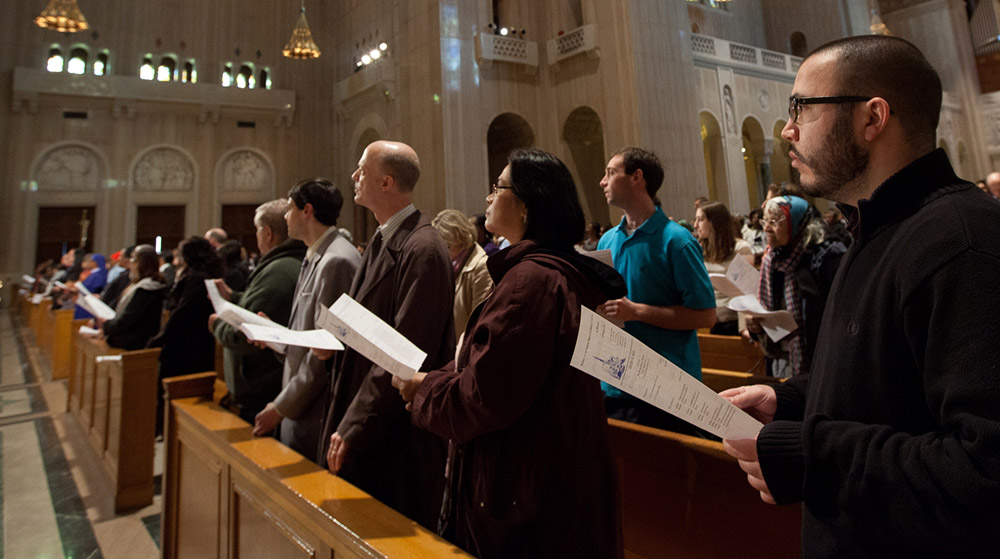Just as we are called to fast and abstain from certain rich foods in Lent — in a spirit of penance and self-discipline — so, too, we “give up” for a time some of the more glorious and joyful aspects of the Liturgy: not only the Gloria — the joyous hymn the angels sang the night our Savior was born — but also the Alleluia (what could be more exhilarating than Handel’s Alleluia chorus from the Messiah?). Moreover, we also omit floral decorations and instrumental music in our churches during those 40 days (see General Instruction of the Roman Missal, Nos. 53, 62, 305, 313). Why? Because all of those elements are external and exuberant expressions of joy; Lent is not a “joyful” season, it is a “penitential” season. While it is true that we should always rejoice (Phil 4:4), during Lent we are soberly and penitentially preparing for the passion and resurrection of Christ.
You ask, “What does removing them do to make the Mass more solemn?” Personally, I don’t think the removal of the Gloria, Alleluia, flowers and instrumental music makes the Mass more solemn. I think it makes the Mass less solemn, but it does make it more sober and austere, more somber. And that sobriety, that frugality of spirit, helps to purify the soul and focus the mind.
The 40 days of Lent offer us an opportunity to imitate what Jesus did in the desert for 40 days: He prayed and fasted in preparation for His public ministry. The Church asks the faithful to perform works of prayer, fasting and almsgiving during the Lenten season in imitation of Christ and for the good of our souls. This “spiritual spring training” makes us stronger if we embrace these practices with mindfulness and generosity.
An essential aspect of the life of the Christian is to worship God at Mass. The Liturgy uses signs and symbols to teach and inspire us, and to help us along the way toward Christ. There are many elements to the Liturgy: sacraments and sacramentals, readings and hymns, gestures and actions, vestments and vessels, art and architecture, priest and people, and so forth. The selection, combination and arrangement of these various elements keeps the Liturgy fresh and engaging. As we read in the Book of Ecclesiastes (see 3:4), so we worship in the Liturgy: There is a time for weeping, and a time for rejoicing.
Rev. Francis Hoffman, J.C.D., Executive Director of Relevant Radio. Follow him on his Facebook page “Father Rocky.”

